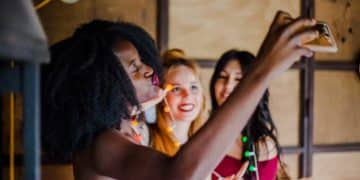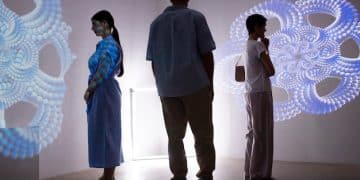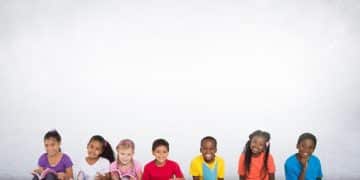AI & Art: How Artificial Intelligence is Reshaping Artistic Expression in the US
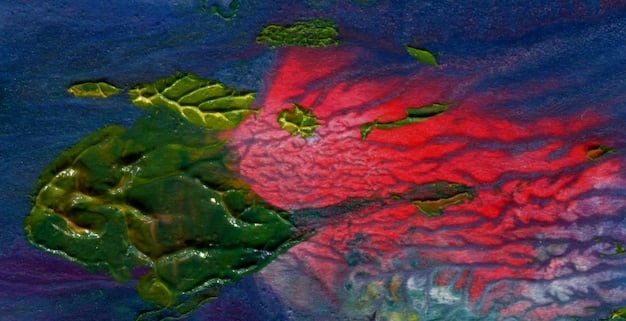
The rise of artificial intelligence is profoundly influencing artistic expression in the US by providing new tools, mediums, and collaborative possibilities for artists, while also raising questions about originality, authorship, and the very definition of art.
The digital revolution has ushered in an era of unprecedented technological advancement, and one of its most transformative innovations is artificial intelligence (AI). In the United States, the rise of artificial intelligence is not just a technological phenomenon; it’s a cultural wave that’s reshaping various aspects of society, most notably artistic expression.
The Dawn of AI-Assisted Art
The integration of AI into the artistic process marks a significant shift in how art is created and perceived. No longer confined to the realm of science fiction, AI is now a tangible tool that artists across the US are leveraging to push creative boundaries.
AI as a Creative Tool
AI algorithms are capable of performing tasks that were once exclusively human, such as generating images, composing music, and even writing poetry. This capability transforms AI into a powerful creative partner for artists.
New Mediums and Possibilities
With AI, artists can explore new mediums and techniques that were previously unimaginable. From interactive installations that respond to human emotion to algorithms that generate unique visual patterns, the possibilities are virtually limitless.
- AI algorithms can analyze vast datasets of existing artworks to generate new pieces in a similar style.
- Artists use AI to create interactive installations that respond to viewer’s movements and emotions.
- AI helps produce unique visual patterns for digital art, animations, and video games.
- AI can assist in the creation of complex musical compositions, and produce variations on existing tracks in new and innovative ways.
The introduction of AI into the artistic arena has democratized access to creative tools. Artists no longer need extensive technical skills to bring their visions to life; AI algorithms can handle much of the heavy lifting, allowing creators to focus on the conceptual and aesthetic aspects of their work. This democratization fosters innovation, encouraging artists from diverse backgrounds to experiment with new forms of expression. Furthermore, AI encourages collaboration across disciplines, uniting artists with technologists and scientists in the pursuit of groundbreaking creative endeavors.
Redefining Authorship and Originality
As AI plays an increasingly prominent role in artistic creation, questions surrounding authorship and originality become more complex. When an AI algorithm generates a piece of art, who is the true artist: the programmer, the user who provided the input, or the AI itself?
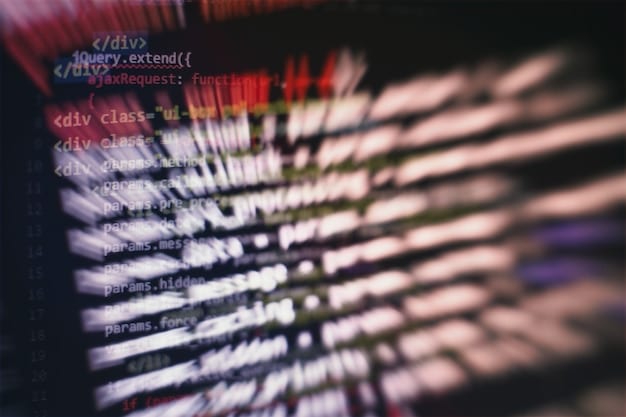
The Role of the Artist
While AI can generate content autonomously, the artist still plays a crucial role in curating, refining, and contextualizing the output. The artist’s vision and intent remain central to the creative process.
Navigating Copyright Issues
The legal landscape surrounding AI-generated art is still evolving, and questions of copyright ownership remain a subject of debate. Courts are grappling with how to apply existing copyright laws to this new form of creative expression.
The debate around authorship and originality in AI art sparks broader philosophical discussions about the nature of creativity itself. Traditional notions of artistic genius, emphasizing individual skill and inspiration, are challenged by the collaborative and algorithmic nature of AI-assisted art. Some argue that the artist’s role shifts from being the sole creator to a curator, guiding the AI’s output toward a desired aesthetic or conceptual goal. Others embrace the ambiguity, viewing AI as a tool that enriches the palette of artistic possibilities, expanding the definition of creativity to encompass human-machine collaboration. This evolving understanding necessitates a reevaluation of copyright laws to address issues of ownership and intellectual property in the age of AI.
AI as a Muse: Inspiring New Forms of Art
Beyond its practical applications, AI also serves as a muse, inspiring artists to explore new themes and concepts. The very nature of AI—its ability to learn, adapt, and generate novel outputs—challenges artists to think differently about creativity and the human experience.
Exploring the Uncanny Valley
AI-generated art often treads into the uncanny valley, the realm of creations that are almost human but not quite. This can evoke feelings of unease, fascination, and introspection, prompting viewers to confront questions about what it means to be human.
Reflecting on Human Cognition
By mimicking human cognitive processes, AI art can shed light on the workings of the human mind. It can reveal patterns, biases, and limitations in our own thinking, leading to a deeper understanding of ourselves.
- AI’s ability to generate surreal and dreamlike imagery inspires artists to explore the subconscious.
- Algorithms detect patterns allowing for the creation of pieces that reflect data-driven narratives.
- AI art prompts contemplation on the boundaries between human and machine consciousness.
- AI-generated pieces challenge traditional aesthetic standards.
AI’s capacity to revolutionize artistic expression extends beyond its practical applications; it inspires artists to explore new themes and concepts that were previously unimaginable. The capacity of AI to learn, adapt, and generate novel outputs challenges artists to think differently about creativity and the human experience. This paradigm shift fosters innovation and cross-disciplinary collaboration, encouraging artists to venture into uncharted territories of creativity. As AI continues to evolve, its role as both a tool and a muse will likely intensify, leading to even more groundbreaking and thought-provoking works of art.
The Ethical Dimensions of AI in Art
As AI becomes more integrated into the art world, it’s crucial to consider the ethical implications. Issues such as bias, accessibility, and the potential displacement of human artists demand careful consideration.
Addressing Algorithmic Bias
AI algorithms are trained on data, and if that data reflects existing societal biases, the AI will perpetuate those biases in its output. Artists must be vigilant in identifying and mitigating bias in their AI tools.
Promoting Inclusivity and Accessibility
Efforts should be made to ensure that AI art tools are accessible to artists from all backgrounds, regardless of technical expertise or financial resources. This can help foster a more diverse and inclusive art world.
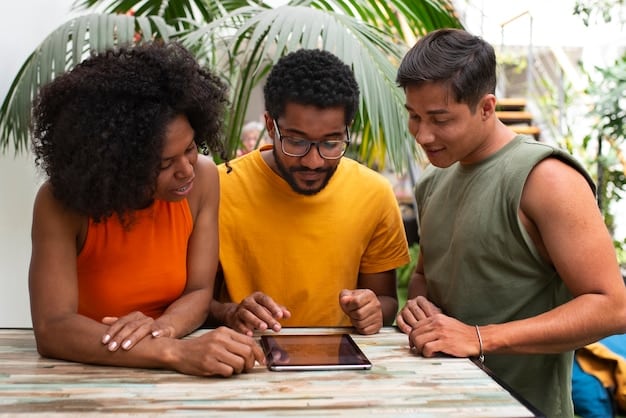
The ethical considerations surrounding AI in art are multifaceted and demand careful attention. Beyond algorithmic bias, the accessibility of AI tools raises concerns about equity and opportunity. If AI-powered creative platforms are only available to a select few, it could exacerbate existing inequalities in the art world, marginalizing artists from underrepresented backgrounds. Addressing these ethical challenges requires a collaborative approach that involves artists, technologists, policymakers, and the broader community. By prioritizing fairness, transparency, and inclusivity, we can ensure that AI serves as a force for good in the art world, empowering artists, and enriching creative expression.
The Response from the Art Community
The introduction of AI into the art world has been met with a range of reactions, from enthusiastic embrace to cautious skepticism. Many artists see AI as a valuable tool for expanding their creative horizons, while others worry about its potential to devalue human skill and creativity.
Embracing Collaboration
Many artists are eager to collaborate with AI, viewing it as a partner in the creative process. They see AI as a means of augmenting their abilities and exploring new artistic territories.
Addressing Concerns about Devaluation
Some artists worry that AI-generated art could devalue human skill and creativity, leading to a decline in the appreciation for traditional art forms. These concerns are valid and warrant careful consideration.
The response from the art community to the rise of AI has been diverse, reflecting the complex and multifaceted implications of this technological shift. While some artists and curators embrace AI as a transformative tool, others express concerns about its potential impact on traditional artistic practices. This dialogue within the art world is essential for navigating the ethical, aesthetic, and economic implications of AI, and ensuring that it serves to enrich, rather than diminish, the creative landscape.
The Future of Artistic Expression in the Age of AI
Looking ahead, the future of artistic expression in the US is likely to be shaped by the continued integration of AI. As AI technology evolves, we can expect to see even more sophisticated and innovative applications in the art world.
Hybrid Art Forms
We can anticipate the emergence of hybrid art forms that seamlessly blend human and AI creativity. These collaborations will push the boundaries of what is possible, resulting in new and unexpected artistic experiences.
Personalized Art Experiences
AI has the potential to personalize art experiences, tailoring them to individual preferences and emotional states. This could lead to more engaging and meaningful interactions with art.
- New media installations will adapt in real time based on the viewer’s feedback.
- AI-generated art will become more accessible through user-friendly platforms.
- Art education will incorporate AI tools to teach new artistic skills.
- AI will assist in art conservation, restoration preserving cultural heritage.
The assimilation of AI into the realm of artistic expression in the US promises to be a dynamic and transformative process. As AI technology advances, it will continue to push the boundaries of artistic creativity, ushering in novel forms of human-machine collaboration. This evolution necessitates ongoing dialogue and critical reflection within the art community to ensure that AI is leveraged in a manner that promotes ethical, inclusive, and enriching creative practices.
| Key Point | Brief Description |
|---|---|
| 🎨 AI as a Tool | AI provides new creative mediums for artists. |
| 🤔 Authorship | Raises questions about who is the true creator. |
| 🤖 Ethical Issues | Concerns arise about bias and inclusivity. |
| 🔮 Future Trends | Expect personalized & hybrid AI-Human Art. |
Frequently Asked Questions
▼
AI offers new tools, enabling artists to create works in mediums never before imagined. Algorithms generate images, compose music, and write poetry, fostering a shift in creative expression.
▼
The question of authorship is complex. It’s debated whether the programmer, the user, or the AI itself is the true artist, and legal landscapes are evolving to address copyright issues.
▼
Ethical issues include algorithmic bias, where AI perpetuates societal biases, and questions about accessibility, ensuring that AI art tools are inclusive for diverse artists.
▼
Some artists see AI as a creative partner, expanding artistic horizons, while others worry about the devaluation of human skill and the impact on traditional art appreciation.
▼
Expect hybrid art forms merging human and AI creativity, and personalized experiences tailored to individual preferences. New media may adapt dynamically based on viewer feedback.
Conclusion
In conclusion, the integration of AI into artistic expression within the US presents both exciting opportunities and critical challenges. As AI continues to evolve, it’s crucial for artists, technologists, and policymakers to engage in ongoing dialogue to navigate the ethical, legal, and aesthetic implications of this transformative technology, ensuring that AI empowers artists and enriches the cultural landscape.

